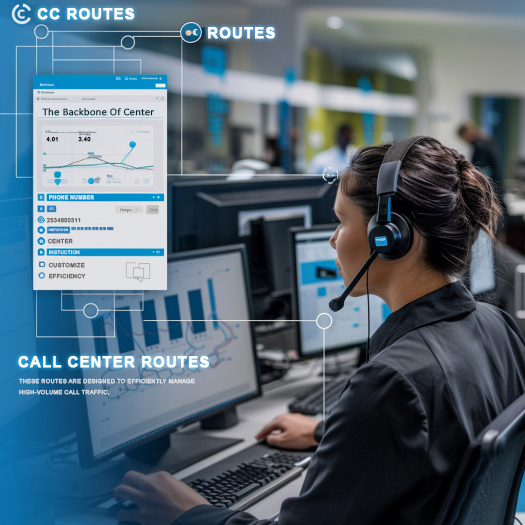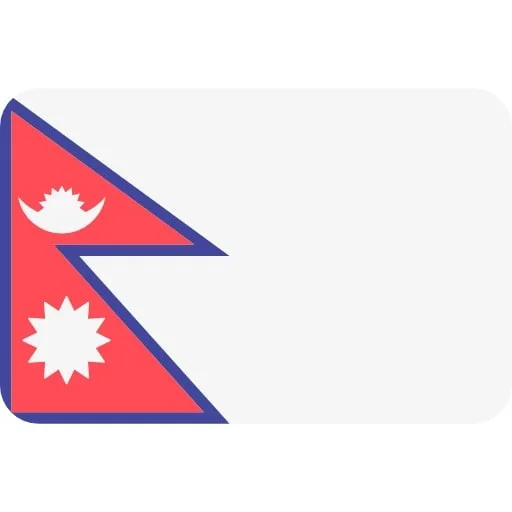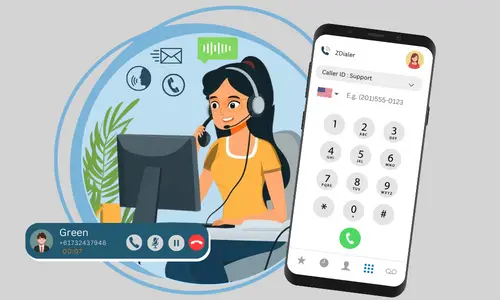CC Routes: The Key to Unlocking Call Center Success

WE’RE PROUD TO WORK WITH LEADING ORGANIZATIONS



What are CC Routes?
CC Routes, short for Call Center Routes, refer to the predetermined paths or channels that inbound and outbound calls take to reach their intended destination within a call center environment. These routes are designed to efficiently manage high-volume call traffic, ensuring calls are distributed to the appropriate agents or departments while optimizing the overall customer experience.
Importance of CC Routes
 Managing high call volumes
Managing high call volumes
 Ensuring call distribution to the right teams/agents
Ensuring call distribution to the right teams/agents
 Optimizing customer experience
Optimizing customer experience
 Facilitating global communication across different regions
Facilitating global communication across different regions

Technical Components
Voice over IP (VoIP) and SIP Trunking
Supported Codecs and Voice Quality
Call Routing Equipment
 Automatic Call Distributor (ACD): Distributes incoming calls based on predefined rules and agent skills.
Automatic Call Distributor (ACD): Distributes incoming calls based on predefined rules and agent skills.  Interactive Voice Response (IVR) system: Allows callers to navigate through menu options.
Interactive Voice Response (IVR) system: Allows callers to navigate through menu options.  SIP-enabled Session Border Controllers (SBCs) or gateways: Facilitate conversion between internal and external networks.
SIP-enabled Session Border Controllers (SBCs) or gateways: Facilitate conversion between internal and external networks.  Call routing software: Manages routing rules, integrates with ACD, and enables real-time monitoring.
Call routing software: Manages routing rules, integrates with ACD, and enables real-time monitoring. Routing Strategies

Least-Cost Routing
Geographic Routing
Failover and Redundancy
CLI Management
 Pass-through CLI: The original caller line identification (CLI) is passed through to the receiving end, allowing agents to see the caller’s actual phone number. This approach promotes transparency and aids in caller identification.
Pass-through CLI: The original caller line identification (CLI) is passed through to the receiving end, allowing agents to see the caller’s actual phone number. This approach promotes transparency and aids in caller identification.  Local/Regional CLI presentation: To improve the customer experience, local or regional CLIs may be presented to callers instead of the original CLI. This strategy can enhance caller recognition and increase answer rates, as customers are more likely to answer calls from familiar area codes or numbers.
Local/Regional CLI presentation: To improve the customer experience, local or regional CLIs may be presented to callers instead of the original CLI. This strategy can enhance caller recognition and increase answer rates, as customers are more likely to answer calls from familiar area codes or numbers. 
Carrier Selection and Management
International Carrier Selection
A comprehensive list of trusted international carriers with strong coverage in target regions is established. These carriers are thoroughly vetted based on their network reliability, quality of service, and ability to meet the call center's routing requirements.
Negotiating Rates and Agreements
Negotiations are conducted with various carriers to secure competitive rates for international call routing. Factors such as call volumes, destination countries, and potential discounts or special agreements based on committed usage levels are considered to optimize cost-effectiveness.
Evaluating Carrier Performance
The performance of each carrier is continuously evaluated based on metrics such as call quality, call completion rates, and network uptime. Regular assessments are conducted to ensure that only carriers meeting the highest standards are utilized for call routing.
International Telecommunication Regulations
Local Regulations and Licensing
In addition to international regulations, the call center routing system is designed to comply with local regulations relevant to call centers and telecommunications within the operating region. This may include obtaining necessary licenses, adhering to data privacy laws, and meeting specific requirements for handling customer information.
Data Privacy and Security Considerations
Considering the international nature of call center operations, special attention is given to data privacy concerns arising from the transmission and handling of caller information across different jurisdictions. Appropriate measures are implemented to ensure the secure storage and transfer of data, in compliance with applicable data protection regulations.
Testing, Monitoring, and Optimization
Test Plans and Scenarios
Regular Reviews and Optimization Processes
Scalability and Growth
Capacity Planning and Network Expansion
As call center operations grow, strategies for capacity planning and network expansion are put in place to handle more calls and expand coverage. This involves partnering with dependable carriers to use their global networks for smooth expansion.
Adapting to Changing Regulations and Carrier Relationships
Procedures are established to update call routes regularly in response to changes in carrier relationships, pricing, or regulations. This keeps the routing system optimized and in line with current standards and laws.
Evaluating Carrier Performance
Carriers are constantly assessed on call quality, completion rates, and network uptime. Regular evaluations ensure only top-performing carriers are used for call routing.

Use Cases and Best Practices

Examples of Successful CC Route Implementations
Real-world examples and case studies showcase successful implementations of CC Routes in various call center environments, highlighting the benefits, challenges overcome, and lessons learned.

Best Practices for Call Center Routing Optimization
Industry-recognized best practices are shared, covering areas such as carrier selection, routing strategy design, performance monitoring, and continuous optimization to achieve maximum efficiency and cost-effectiveness.

Common Challenges and Solutions
Common challenges faced by call centers in implementing and managing CC Routes are addressed, along with practical solutions and strategies to overcome them. This includes addressing issues related to regulatory compliance, carrier management, and scalability.

AUSTRIA

BANGLADESH

BELARUS

BELGIUM

BULGARIA

CAMBODIA

CANADA

CHINA

CROATIA

CZECH REPUBLIC

DENMARK

ESTONIA

FINLAND

FRANCE

GEORGIA

GERMANY

GREECE

HUNGARY

INDIA

INDONESIA

IRELAND

ISRAEL

ITALY

JAPAN

LAOS

LEBANON

MALAYSIA

MONGOLIA

MYANMAR

NEPAL

NETHERLANDS

NORWAY

PAKISTAN

PHILIPPINES

POLAND

PORTUGAL

ROMANIA

SAUDI ARABIA

SERBIA

SINGAPORE

SLOVAKIA

SPAIN

SRI LANKA

STATE OF PALESTINE

SWEDEN

SWITZERLAND

THAILAND

TURKEY

TURKMENISTAN

UKRAINE
Need Assistance with Call Center Routing?
FAQs About CC Routes
What is CC traffic?
What are CC Routes?
How do CC Routes differ from CLI Routes?
What are UK CC Routes?
What are US CC Routes?
What are CC Routes in telecommunications?
How do CC Routes improve call center operations?
Are there specific CC Routes for different regions, like the UK or USA?
What considerations should be made when choosing a CC Route provider?
Filling out our online form

- Talk to an expert
- Try for free
By submitting this form you agree to our privacy policy.
For more information on how your personal data will be processed, please read our privacy statement.
We will not share your information with third parties.

























